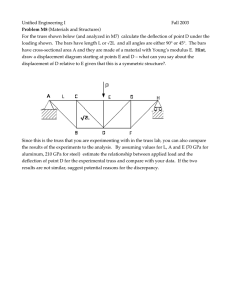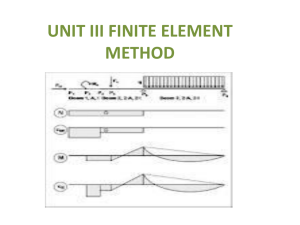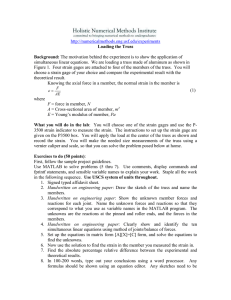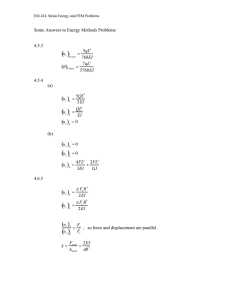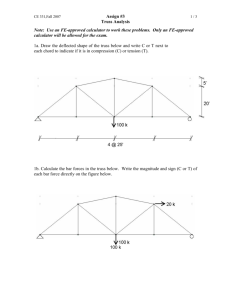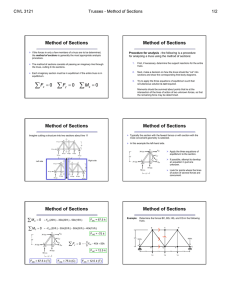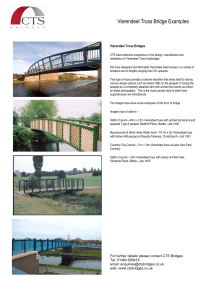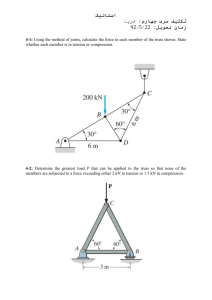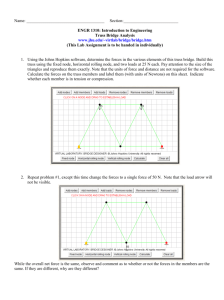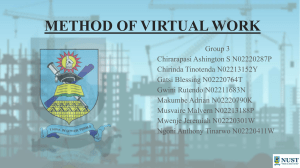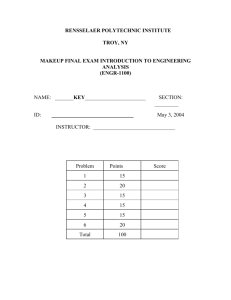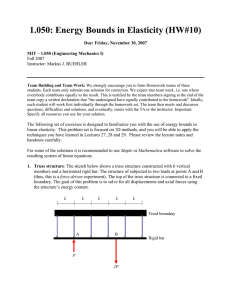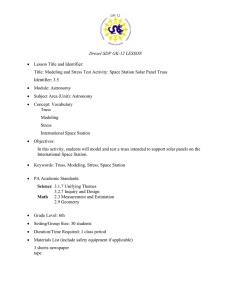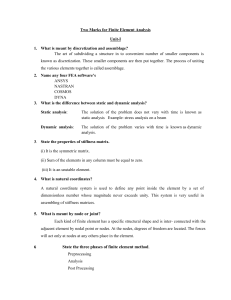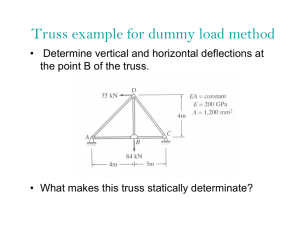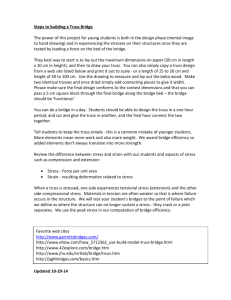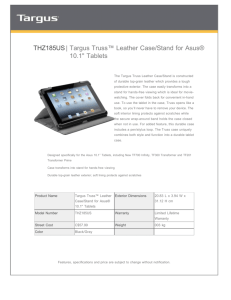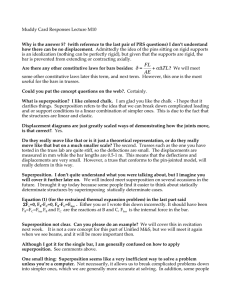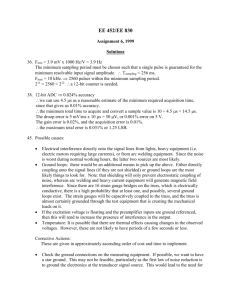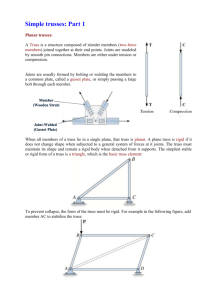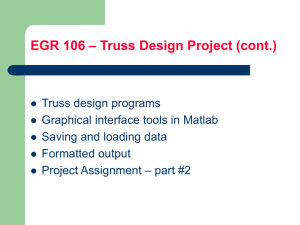Chapter 9 Notes
advertisement
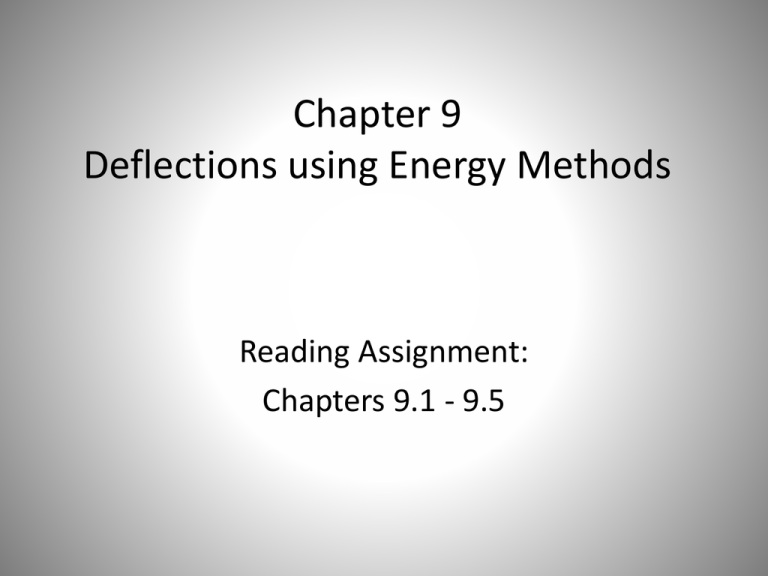
Chapter 9 Deflections using Energy Methods Reading Assignment: Chapters 9.1 - 9.5 External Work •Used for more complicated loadings or for structures such as trusses and frames. •Conservation of Energy Principle Ue = Ui External Work – Force/Moment X U e Fdx U e Md 0 P - Linear Elastic Response F x 2 P P x U e Fdx xdx 2 0 0 X P Ue 2 X 0 1 U e M 2 Strain Energy – Axial Force • Hooke’s Law σ = EЄ • Normal Stress σ = N/A A=Constant Cross-Sectional Area Final Strain Є=Δ/L L=Length Δ = NL/AE Ui = N2L/2AE Strain Energy – Bending • Strain Energy dUi =M2dx/2EI • Strain Energy over Beam Length L M 2dx Ue 2 EI 0 Example #1 Truss Example Real Work Method Principle of Work and Energy P Ue 2 M 2dx Px dx 1 P 2 L3 Ui 2 EI 2 EI 6 EI 0 L 2 P P 2 L3 PL3 Ue Ui 2 6 EI 3EI •Application of this method is limited •Only one load may be applied to the structure •Only the displacement under the force can be obtained. Principle of Virtual Work • Also known as the “unit load method” • Used to determine displacement and slope at a specific location on a structure. • See Figure 9-6 in textbook. Principle of Virtual Work • External Virtual Work P’Δ • Internal Virtual Work Σu*dL • ΣPΔ = Σuδ P’ * Δ = Σu*dL • Moment P’*θ = Σuθ *dL Method of Virtual Work: Trusses • External Loading nNL P' AE • Temperature P' nTL • Fabrication Error and Camber P' nL Method of Virtual Work Procedure 1) Place unit load on the truss at the joint where the desired displacement is to be determined and remove all real loads. NOTE: Load should be in the same direction of displacement. 2) Calculate the internal forces in each truss member. (+ = tension, - = compression) 3) Remove unit load and apply real loads to truss. 4) Calculate the internal forces in each truss member. (+ = tension, - = compression) Method of Virtual Work Important Notes 1) You must retain the algebraic sign for each of the n and N values when placing them into the virtual work equation. 2) If the virtual work equation is positive, the displacement is in the same direction as the unit load. If it is negative it is in the opposite direction. 3) For Temperature Equation: 1) ΔT = Positive with temperature increase, Negative with temperature decrease. 4) For Fabrication Equation: 1) ΔL = Positive with increase in length, Negative with decrease in length. 5) MAKE SURE YOU PAY ATTENTION TO YOUR UNITS. Example #2 Truss Example Virtual Work Method Example #3 Truss Example Virtual Work Method
